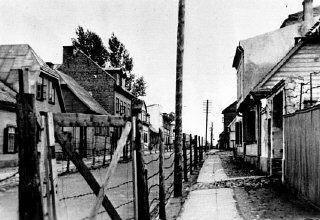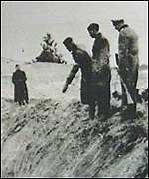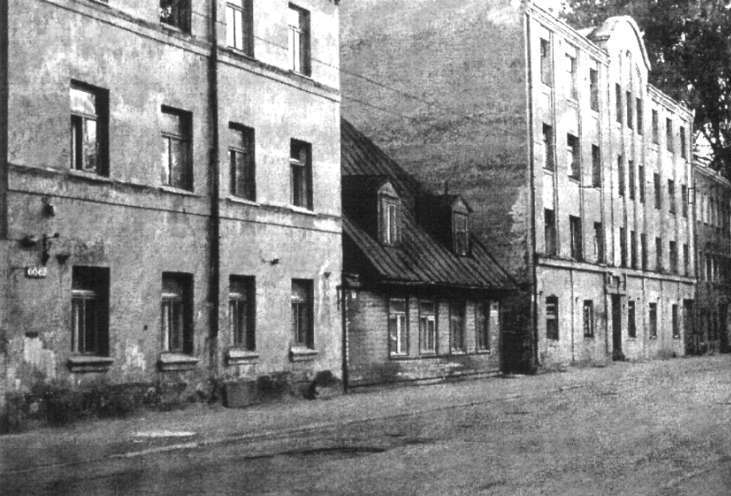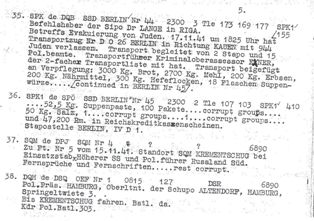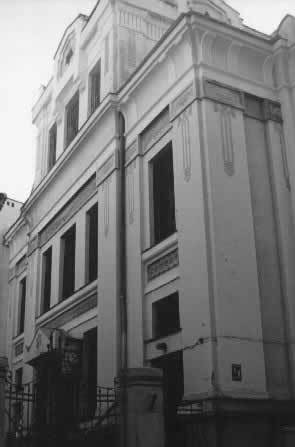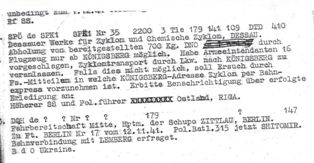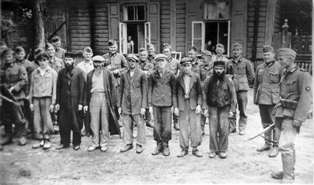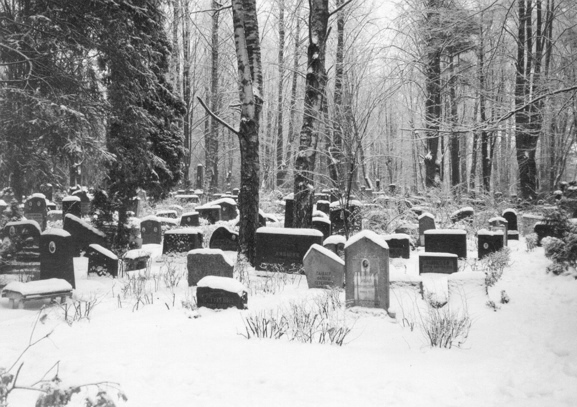Holocaust Education & Archive Research Team |
Ghettos
Introduction to the Ghettos of the Holocaust
Jewish Ghettos The Judenrat Judenrat Leaders Prominent Jews
| |||||||||
The Killings at Riga
Riga the capital of Latvia was founded in the thirteenth century – at different times it was under German, Polish, Swedish and Russian rule. From 1918 to 1940 it was the capital of independent Latvia.
In 1940 it was annexed to the Soviet Union with the rest of Latvia, and became the capital of the Latvian Soviet Socialist Republic. Jews first settled in Riga in the seventeenth century. They were expelled from the city in 1742, but a few decades later Jews were again living there.
In 1935 the Jewish population of Riga was forty-three thousand, about half the total number of Jews in Latvia and eleven percent of the city’s total population.
Riga was the political and cultural centre of Latvian Jewry. It had Jewish schools with Hebrew, Yiddish, Russian or German as the language of instruction. There were seminars for kindergarten teachers, a rabbinical academy, a “people’s university”, a theatre, several hospitals, welfare institutions and three Yiddish dailies and several periodicals in different languages.
On 1 July 1941, nine days after the invasion of the Soviet Union, the Germans occupied Riga. Several thousand Jews – among them soldiers serving in the Red Army – managed to get out of the city when it was being evacuated, but many Jews from other places who had taken refuge in Riga were caught there. On the first day of the occupation, Latvian volunteer units began arresting Jewish males by the thousands and imprisoning them in the Centralka and Terminka jails, in police headquarters, and in the cellars of the headquarters of Perkonkrust (Thundercross), the Latvian fascist organisation.
After a few days of torture and beatings, the prisoners were killed in the nearby Bikernek Forest and at other locations, but the precise number is not known. At that time a pogrom was launched inside the city, Jews were rounded up for forced labour, subjected to assault and rape, chased away from the food distribution lines, and denied treatment in the hospitals.
Many Jews were driven out of their homes to make room for Germans, and their money, furnishings, and valuables were confiscated. On 4 July 1941 the Latvian volunteers set fire to the Chor synagogue, in the centre of Riga, leaving only the Pietstavas synagogue standing, since the adjacent buildings were inhabited by Latvians.
Between July and October 1941 the Germans issued one anti-Jewish decree after another. Jewish property was confiscated, and Jews had to register and to be identified by a Star of David. They were not allowed to use public transportation, walk on the sidewalk, frequent public places, attend any educational institution, or practice a profession (except for doctors, who were permitted to treat Jewish patients only).
Ritual slaughter was outlawed – Jews were permitted to purchase food in only three stores and they suffered from discrimination in the allocation of food rations. Any property still owned by Jews was put under tight control and conscription of Jews for forced labour was made official.
In mid- August a decree was enacted ordering all Jews into the ghetto, which had been set up in the Moscow quarter, a suburb north of Riga populated by Jews and poor Russians. By the time the ghetto was sealed off 29,602 Jews were concentrated there, made up of 15,738 women, 8,212 men and 5,652 children.
A high fence was erected around the ghetto and Latvian guards were posted at its gates to supervise exit and entry. The ghetto covered an area of 96,875 square feet and was extremely congested, most of the houses were dilapidated, and sanitary conditions and water supplies were totally inadequate.
Even before the ghetto was cut off from the rest of the world, an Altestenrat (Council of Elders) was appointed, chaired by Michael Elyashov, and a Jewish ghetto police was formed with Michael Rosenthal as its commander.
The Council of Elders and its sections and committees made efforts to improve living conditions in the ghetto, establishing a hospital, a medical clinic, and a pharmacy, a home for the aged, a laundry, a shoe repair shop and a variety of other services in which handicapped persons were put to work.
A Labour exchange supplied the Germans with Jewish forced labour – the unskilled were employed in backbreaking work and the skilled artisans in their regular occupations. A few Jews with technical skills were given preferential treatment.
The women were employed in kitchen and cleaning jobs. Occasionally groups of Jews were sent to work outside the ghetto, in peat bogs or in farms, or on the construction of the Salaspils concentration camp, which was being set up on a nearby site. On the eve of the ghetto’s liquidation four thousand men and one thousand women were listed as workers, out of a total of eight thousand and sixteen thousand respectively.
On 11 October 1941 Himmler appointed SS-Obergruppenfuhrer Friedrich Jeckeln as Higher SS and Police Leader for Ostland, and in post war testimony that when he met Himmler in November 1941, Himmler said “that all Jews in the Ostland had to be destroyed to the last man.”
On 19 November 1941 the Germans separated the working Jews from the rest of the ghetto inhabitants, moving them to a fenced-in area in the north-east corner of the ghetto, which three days earlier had been cleared of its inhabitants. This area came to be known as the “small ghetto.”
On the 30 November 1941 the most elaborate measures were prepared in Riga. The ghetto’s were cordoned, the Jewish working commando’s were marched out under guard, while rows of modern, blue Riga motor-buses were drawn up outside the ghetto gates.
Miles out in the forest, near the railway halt of Rumbuli, the execution pits had been dug by Russian prisoners of war. Here again the Einsatzgruppe resume for January 1942 mentions what seems to have been the standard figure for these affairs, a total of 10,600 victims.
A daily report issued while the massacre was in progress, declares that Jeckeln was engaged in a “shooting action,” and that on 30 November 4,000 Jews from the Riga ghetto and an entire transport of Jews from the Reich had been dealt with.
This was the notorious “Bloody Sunday,” but the second Riga action on 8 December on 8 December was almost on the same scale. One witness while gathering firewood for the Wehrmacht saw the preparations in the forest, two lorry-loads of German police troops and a long row of machine –guns.
A third action, also on 8 December took place not at Rumbuli but at Bikernek, the “little birch wood,” which was destined to become the permanent execution place for the Riga ghetto.
This action was curtailed. At 12 o’clock, when a column of the condemned Jews were marching out of the ghetto, the police NCO pulled out his watch and remarked: “You are in luck. It is one minute after time – the action is over.”
During this action the entire population of the “large ghetto” was killed, including most of the members of the Council of Elders, the historian Simon Dubnow and Rabbi Menahem Mendel Zak, the Chief Rabbi of Riga.
One of the murderers Herbert Cukurs personally killed Jews, Isaac Kram, a native of Riga, provided a sworn statement to the Yad Vashem investigators:
"In March 1942 when I was living in Ludza Street in the Jewish quarter in Riga, I suddenly saw hundreds of people savagely chased and beaten by Nazi soldiers led by Herbert Cukurs. I was standing close by to him when an old woman, who had been dumped into a truck, began shouting at the top of her voice, beseeching Cukurs to let her be put in another truck where she had spotted her daughter.
Cukurs replied by killing the woman with a single shot fired with his big revolver. A few minutes later he shot and killed a small child, just because he annoyed him standing the street and crying for his mother."
Cukurs was assassinated in Montevideo in February 1965 by a group of Jews, who were led by Anton Kunzle, and one of the Jews who called himself Oswald Taussig, who like Cukurs came from Riga.
At the very least 24,000 people from Riga had been murdered, Stahlecker’s estimate is actually 27,800. Of the Riga Jewish community there remained only 4500 men and 300 women, but within a week of the last action a second transport of Reich Jews, the first of a long series, arrived in Riga to occupy the corpse strewn rooms of the “little ghetto.”
Because of the Reich transports and also the presence of Luftwaffe troops near the execution ground the Riga action created a great deal of gossip.
It also made an impression on Heydrich, who invited its organiser Sturmbannfuhrer Dr Rudolf Lange of the Security Police to attend the Wannsee conference. It is significant that Heydrich attributed the postponement of this conference from 8 December 1941 to 20 January 1942 “to events in which some of the invited gentlemen were concerned.”
It was also significant that on 14 December Alfred Rosenberg told Hitler that “in view of developments in the East,” he would omit the word Ausrottung, extermination from his forthcoming speech. There were within the civil administration opposition to the murders, which had delayed the Riga executions. Hinrich Lohse the Reichskommissar for the Occupied Eastern Territories (Ostland) was based in Riga.
On 15 November 1941 he asked for a ruling whether all “Ostland” Jews were to be killed without regard to the economic situation. The reply from Rosenberg’s office did not reach Riga till 18 December 1941 it was signed by Otto Brautigam, then deputy chief of the Ministry’s political department.
Brautigam wrote that by now the Jewish question in the “Ostland “had almost certainly been solved in verbal discussions, but on principle, economic considerations were not to apply at all. Such matters should in any case be settled with the Higher SS and Police Leaders.”
Clearly the above was a nice sort of Pontius Pilate letter from a relatively liberal official. Having emptied the “large ghetto” the Germans now proceeded to repopulate it with Jews. These were from the Greater Reich- Germany, Austria and the Protectorate of Bohemia and Moravia.
The Germans set it up as a separate ghetto, with its own institutions, that came to be known as the “German ghetto.” Between December 1941 and the spring of 1942, sixteen thousand Jews from the Reich were brought to the “German ghetto, “most were killed in subsequent “Aktionen.”
A very detailed description of one such transport from the Reich follows:
The Viennese transport reached Riga on 10 February 1942, it was met at the station by Dr Rudolph Lange, one of the deportees Gertrude Schneider later recalled how Lange told these latest arrivals that those who were unwilling or unable to walk the seven kilometres to the ghetto could make the journey on trucks which had been especially reserved for them. “In this way he said, “those of you who ride can prepare a place for those who walk.”
Gertrude Schneider account continued:
It was an extremely cold day – forty two degrees below zero, to be exact – and so the majority of the hapless, unsuspecting Jews from Vienna took his advice and lined up to board the trucks. They did not know that those greyish- blue trucks had been manufactured by the Saurer Works in Austria especially for the implementation of the “final solution.”
These trucks were the famous gas-vans, which were used from time to time despite the fact the SS did not especially like them because they always had mechanical problems. The “small ghetto” was reorganised under A. Kelman who had been one of the leaders of Maccabi, the Jewish sports organisation. A small proportion of the ghetto inhabitants were employed in the ghetto institutions, but most of them worked outside the ghetto.
Some of these “outside workers” began living at their place of work. Large groups of Jews from the ghetto were sent on seasonal jobs outside the ghetto, mainly to the peat bogs. The official food rations were too meagre to live on, they were augmented by supplemental rations handed at the Jew’s places of work and, primarily, by food smuggled into the ghetto.
The smuggling – which also included medicines and fuel – continued all the time, even though it was strictly prohibited and was punishable by imprisonment, flogging or even death. On 8 February 1942, three hundred and eighty Jews from Kovno – men, women and children – were deported to Riga and another three hundred Jews also from Kovno on 24 October.
The new arrivals set up a clandestine grocery and bakery and helped organise classes for the few children left in the ghetto. A school and a special kitchen for the children were established and a program of cultural events was introduced. In early January 1942 the first steps were taken to organise an underground, which eventually became a network of twenty-five secret cells, with a total of two hundred to three hundred members.
Twenty-eight of the ghetto’s forty policemen were in four special cells. The ghetto underground organisation contacted underground groups on the outside in the hope of joining the partisan fighters. The underground members’ principal endeavour was to acquire weapons, mostly by having them smuggled in by Jews working in the German storehouses of captured weapons, they also trained in the use of the arms.
On 28 October 1942, the first group of ten underground members left the ghetto in a truck driven by a Latvian heading for the Belorussian border in order to join the partisans there. The group fell into a trap, and in the ensuing exchange of fire most of the Jews were killed, only two were captured alive by the Germans. The German security forces having encountered the underground, lost no time in taking punitive action against the “small ghetto.”
That very day large numbers of suspects were arrested, on 31 October one hundred and eight Jews who were classified as “unfit for work” and who had nothing to do with the underground were executed. The Jewish policemen were summoned to the ghetto commandant, lined up, and shot on the spot. Several Jews who had succeeded in escaping the slaughter were caught and killed.
On 1 November 1942 the “small ghetto” ceased to exist as a separate entity and was incorporated into the “German ghetto.” Henceforth Riga had only one ghetto divided into two sections:
Section “R” for the Jews from the Reich - Section “L” for the Latvian Jews
The latter had one representative on the joint ghetto council, the Jewish police from the two ghettos were unified into a single body, commanded by a German Jew but consisting, for internal purposes, of two platoons, made up of German and Latvian Jews, respectively.
A new Latvian Jewish police force was formed after the murder of their predecessors; these changes had the effect of further aggravating the existing tension between the Jews from the Reich and the Latvian Jews.
In the wake of the underground’s exposure, more and more Jews began living at their place of work. Each such place became a separate unit with its own internal leadership. The ghetto was gradually emptied of its inhabitants and there was only tenuous contact among the different groups.
In the summer of 1943 the Germans further thinned out the ghetto, transferring some of its inhabitants to the Kasierwald camp and others to their places of work or to labour camps that later became Kaiserwald satellite camps.
That November the Germans carried out large-scale Aktionen in what was left of the Riga ghetto and in the places where Jews were employed. In December, when the process of clearing the ghetto of its inhabitants had been completed, the Germans returned the area to the Riga municipality. In 1944, with the Soviet army advancing toward the Latvian border, the Germans launched an operation designed to obliterate traces of the crimes they had committed.
Special groups of Jewish men were ordered to re-open the pits containing the mass graves and burn the corpses – on completion of their assignment, the Sonderkommando men were liquidated. In June, by which time the Soviet army had reached the Latvian border, the Germans launched Aktionen in which they killed many of the Jewish prisoners in Kaiserwald and its satellite camps.
The remaining Jews were sent to concentration camps outside Latvia, chiefly to the Stutthof concentration camp, near Danzig. On the 13 October 1944 the Soviet army liberated Riga. A few days later some one hundred and fifty Jews, among them a few children, came out of their hiding places.
After the war the Soviet authorities encouraged citizens from the Soviet interior, included a large number of Jews to settle in Riga.
By 2005 there is an estimated 9,000 Jewish inhabitants in Riga out of a total population of 800,000. Memorials have been erected to the victims of Rumbuli in 1962 and to the victims in Bikernek Forest in 2001. The Salaspils Memorial Park was opened on 31 October 1967.
A memorial at Kaiserswald was dedicated on 29 June 2005.
Sources:
Encyclopedia of the Holocaust - Israel Gutman (Ed) - New York 1990 The Holocaust by Sir Martin Gilbert, published by Colins, London 1986 The Final Solution by Gerald Reitlinger, published by Sphere Books London 1971 Aftermath by Ladislas Farago, published by Hodder and Stoughton 1974 National Archives Kew Holocaust Historical Society Borje Hallstrom
Photos:
USHMM Private Collections
Copyright. Chris Webb HEART 2007
|

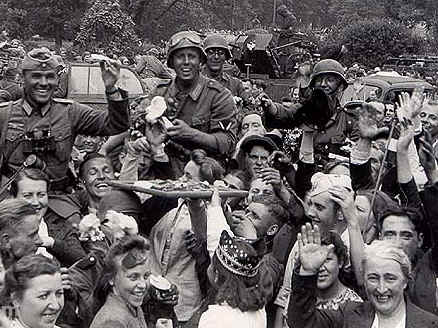
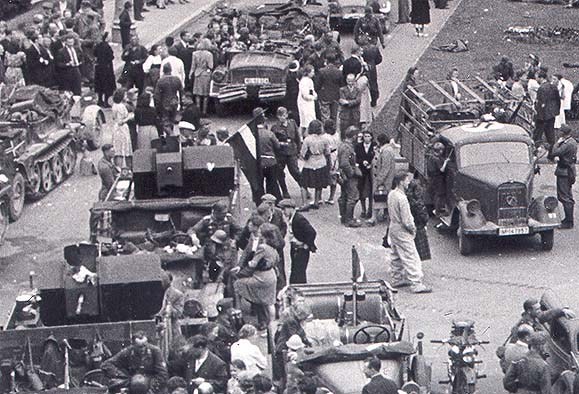
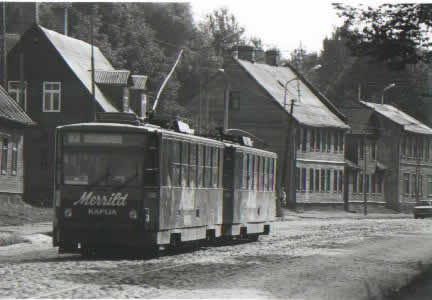
%20field%20clothing%20depot.%20Riga,.jpg)
